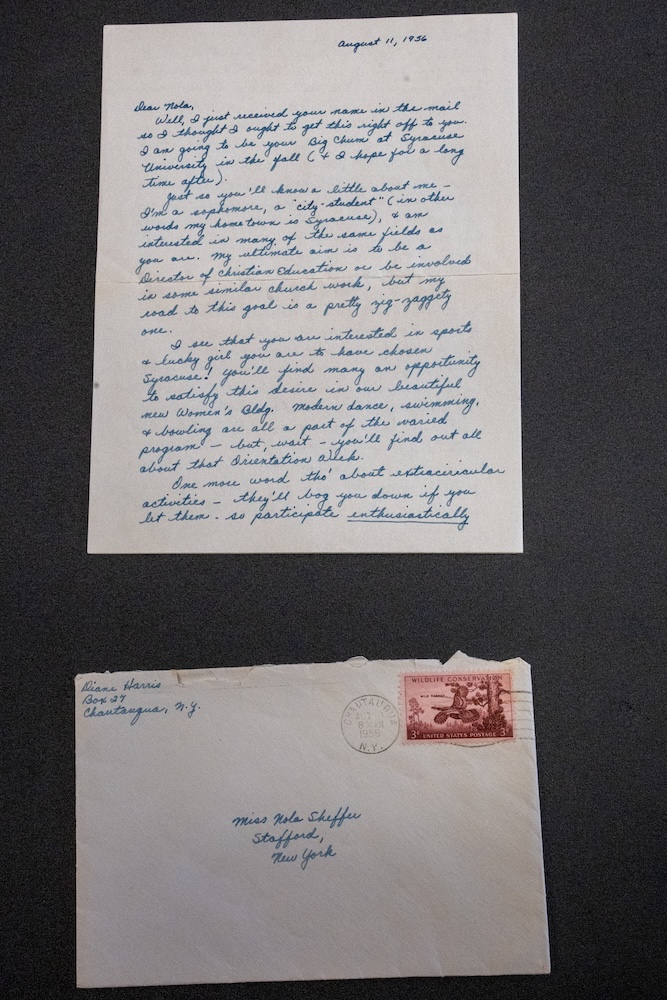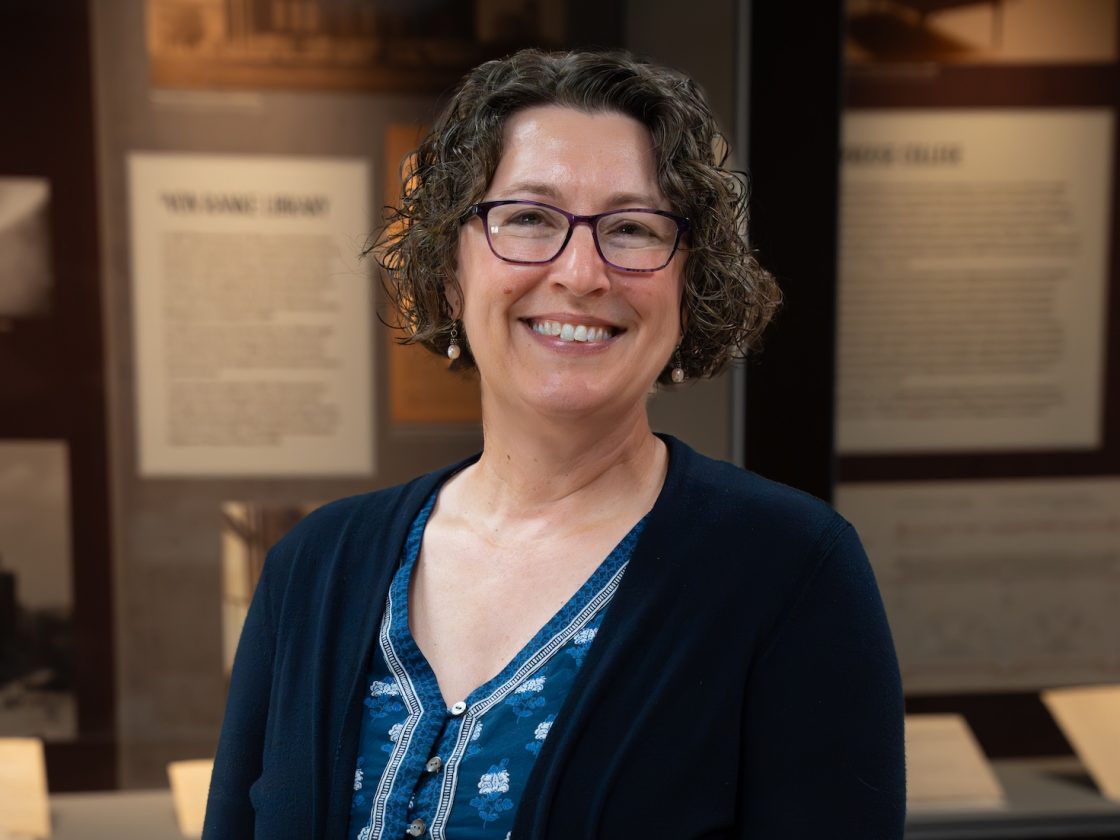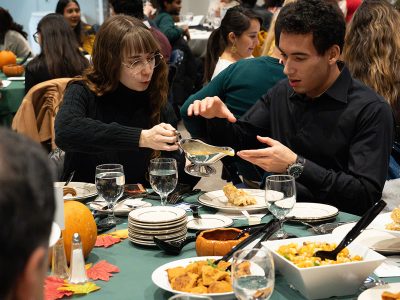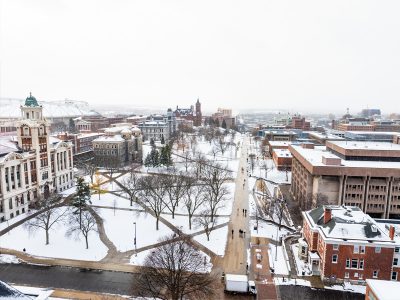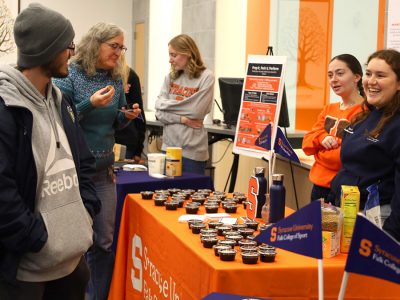Meet Meg Mason, the Archivist Uncovering the University’s Hidden Stories
It’s hard for Meg Mason to pick her absolute favorite item in the University Archives collection. But the University archivist is sure of one thing. When she narrows it down, the majority of the items she would choose are linked by a particular theme—the way they give a glimpse into student life at the University through the years.
“That’s the fun stuff,” she says.
Seeing how people lived, being able to put herself back in the time and place, has always been a draw for Mason, who oversees the archives, which are part of the Special Collections Research Center in the University Libraries.
When Mason was studying history in college, she knew she wanted to pursue a career that fed her passion for putting herself back in time by seeing how people lived.
“I got into the documentation about it,” she says of her work as an archivist.
What Goes Into Maintaining the Archives
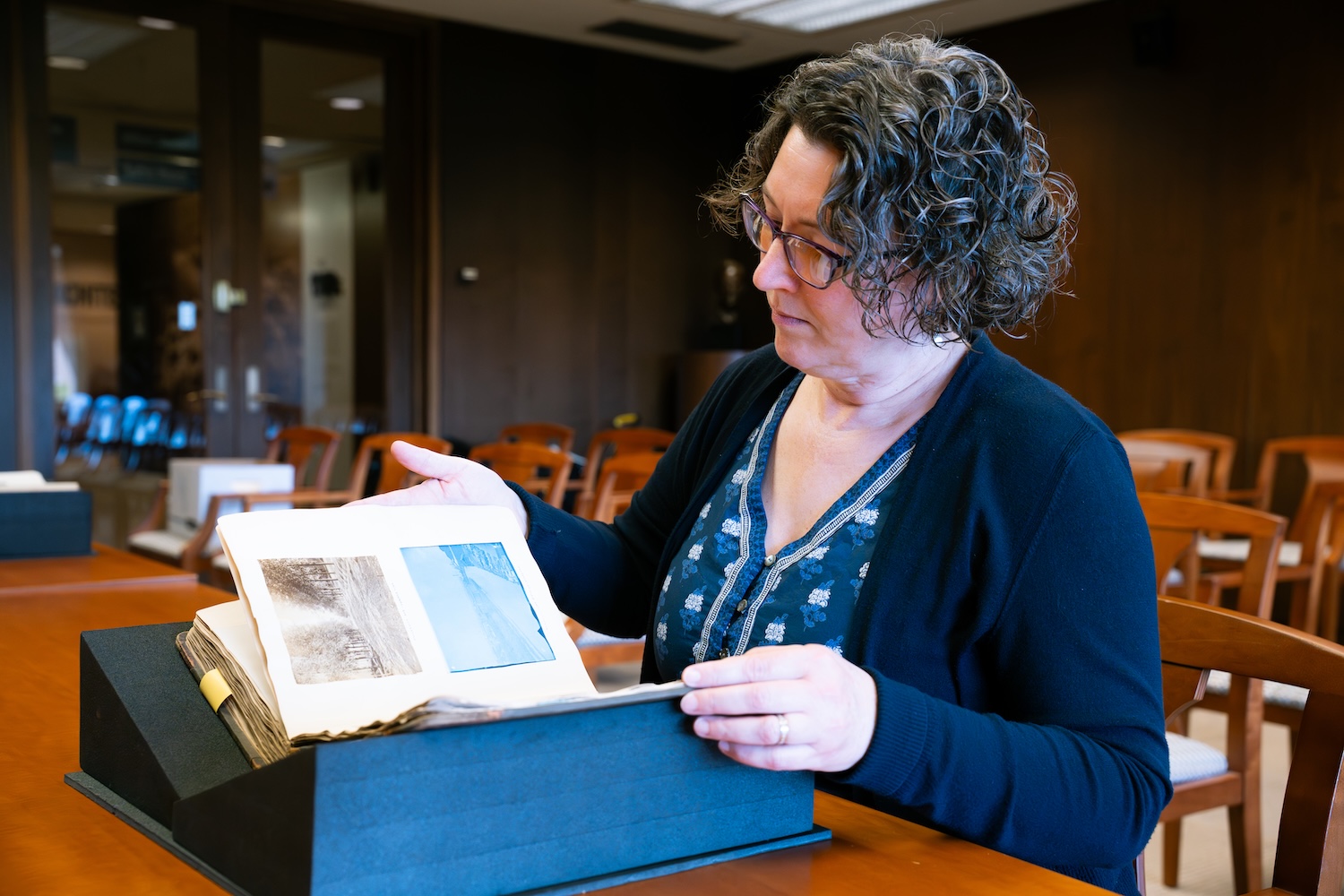
Mason arrived at the University as a temp, eventually becoming assistant archivist, and then, University archivist. Previously, she spent almost a decade working in the manuscript division and National Digital Library Program at the Library of Congress.
As University archivist, she’s responsible for overseeing the mission of the archives, which is to collect, preserve and make accessible to researchers and the University community, and beyond, the repository’s records.
No day, she says, is the same.
Recently, she curated an exhibition on campus buildings. In concurrence with the exhibition, the Special Collections Research Center is hosting a free event Oct. 30 that will feature film clips from the archives showcasing University buildings, with Mason providing additional insights through the program. The process for putting up an exhibition takes about two years, with her time occupied with research, selection of materials, writing for the displays and working with colleagues on design, among other tasks.
When she’s not curating an exhibition, Mason is involved in organizing tabling events for the archives, teaching students, interacting with donors and working with staff for transferring records to the collection.
“That occupies a good chunk of my time,” she says of the range of her day-to-day activities. “Then once we acquire the materials, there’s a lot of collections management.”
When new items are being added to the collection, they have to be arranged and rehoused, with information taken down to describe the item. Archivists then create a guide or finding aid, which is put online, so people doing research can locate the item.
Managing all of the moving pieces for serving the mission of the archives can be a challenge, Mason says. Handling, cataloging and digitizing materials for the collection—all done to particular standards—takes time, and there are always requests coming in from researchers and the public requiring her attention.
“There’s a lot of us in this field who think it’s going to be quieter when it’s actually not,” she says with a laugh. “Because this is exciting stuff and people want to come and see it, or they want to see it in a different way. They want it digitized, and it’s not so easy to do that work quickly.”
The Best Parts of the Job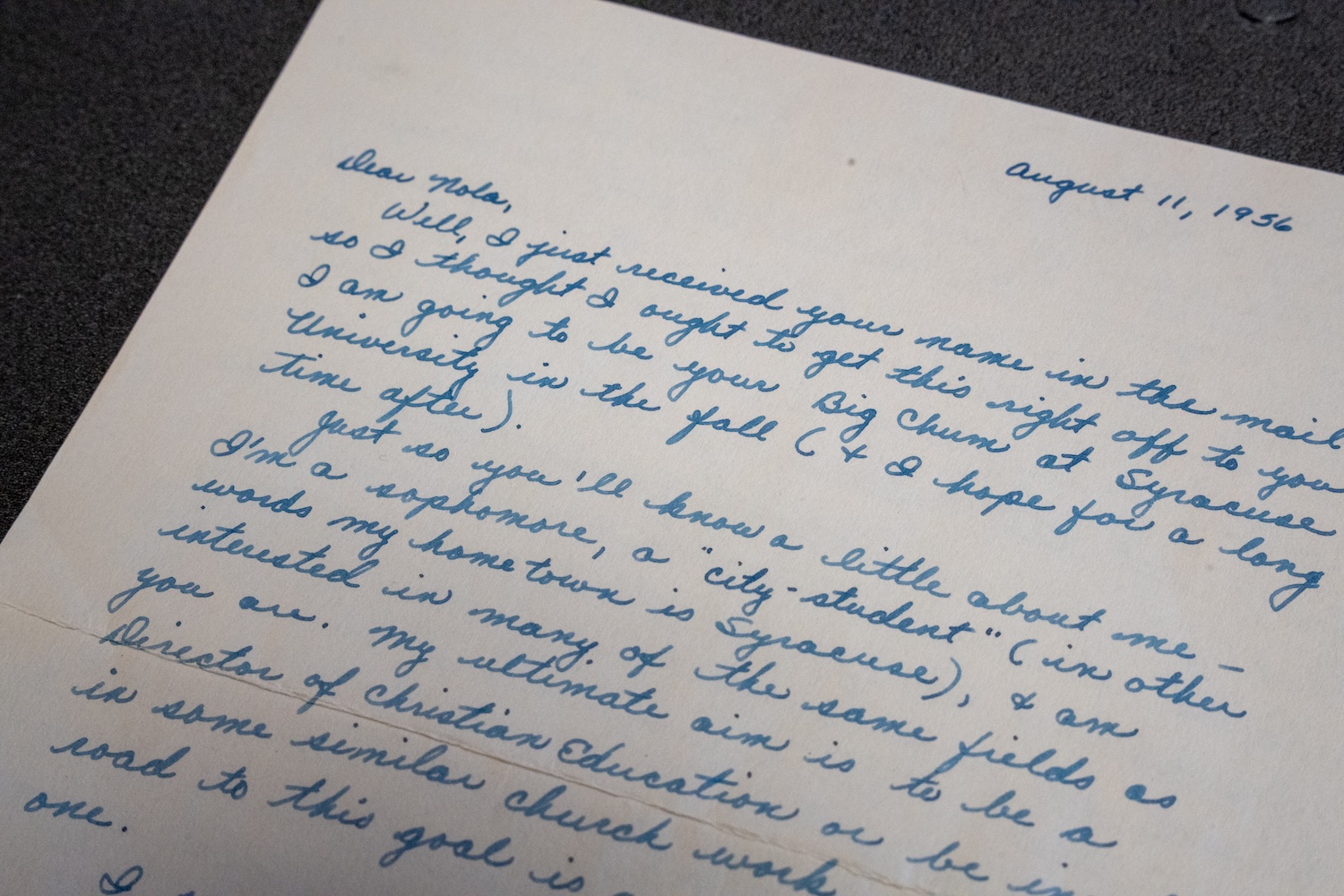
Discovering something new is always a highlight for Mason.
Sometimes she comes across a donor who has a unique item documenting an element of the University’s history. Other times, the excitement arrives with finding something in the archives she didn’t know was there or connecting seemingly disparate materials that tell a story about the past.
“Being able to take one item from one collection and then something else that maybe is in a totally different format in another collection and how they all are like pieces of a puzzle that tell a story,” she says. “Unlike a history book where somebody’s done the work and looked at all the primary sources, the primary sources are here.”
Sometimes responding to requests from alumni or other community members, Mason learns something new about the University’s history and the materials in the collection. For instance, she made such a discovery related to the University’s history during World War II, when the school accepted Japanese American students at a time when many were being held in internment camps.
Few records survived from the time, Mason says.
So when the daughter of a Japanese American alumna who attended the nursing school during the Second World War asked Mason if she could find the names of her mother’s classmates, the archivist initially thought it woudn’t be possible. The nursing school records were unprocessed, but Mason found herself pulling files anyway.
To her surprise, she came upon Japanese names and was able to send them to the alumna’s family.
“I sent a list and she remembered them,” Mason says.
Being able to find those hidden nuggets of history and making them accessible to the community are the moments that stick with Mason.
“When you find sweet little pieces like these, that keeps you going,” she says.
Below, read about some of Mason’s favorite items in the University’s collection:
Howard Dixon Mitchell Scrapbook
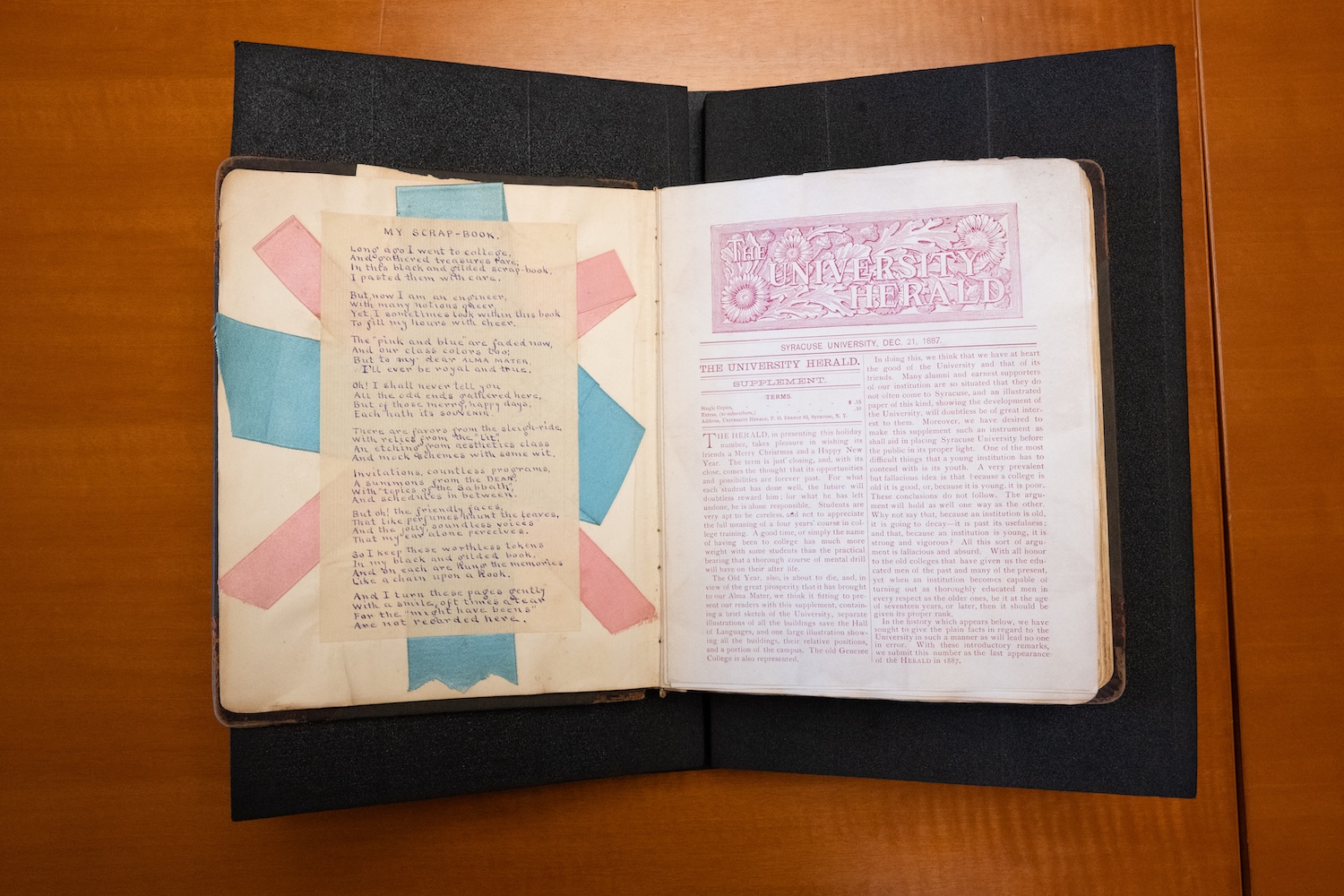
Relay Race Trophy
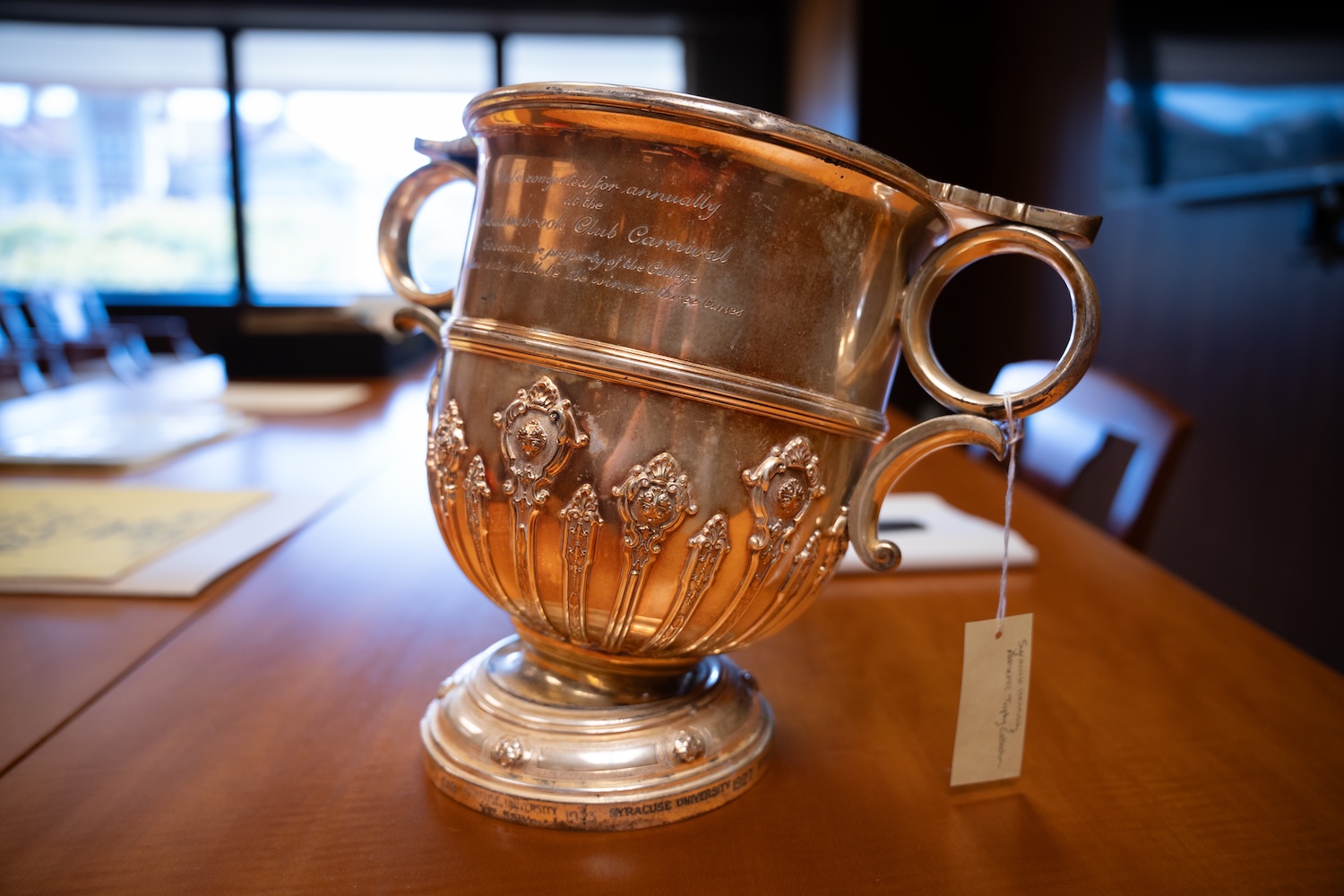
Chaka Khan Poster
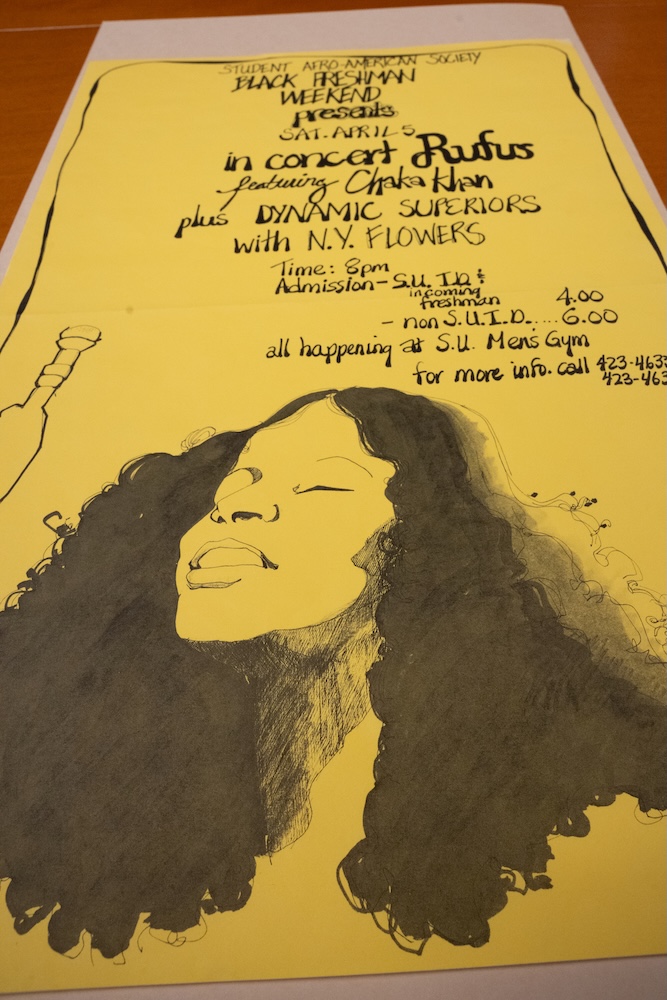
Letter to Chancellor Day
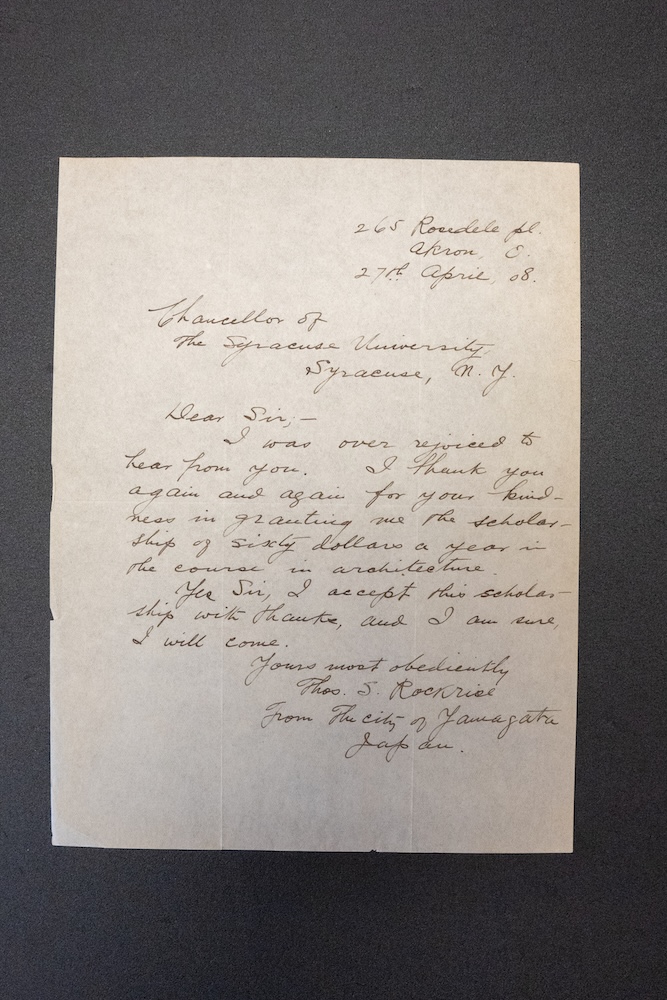
Photo of Bird Library
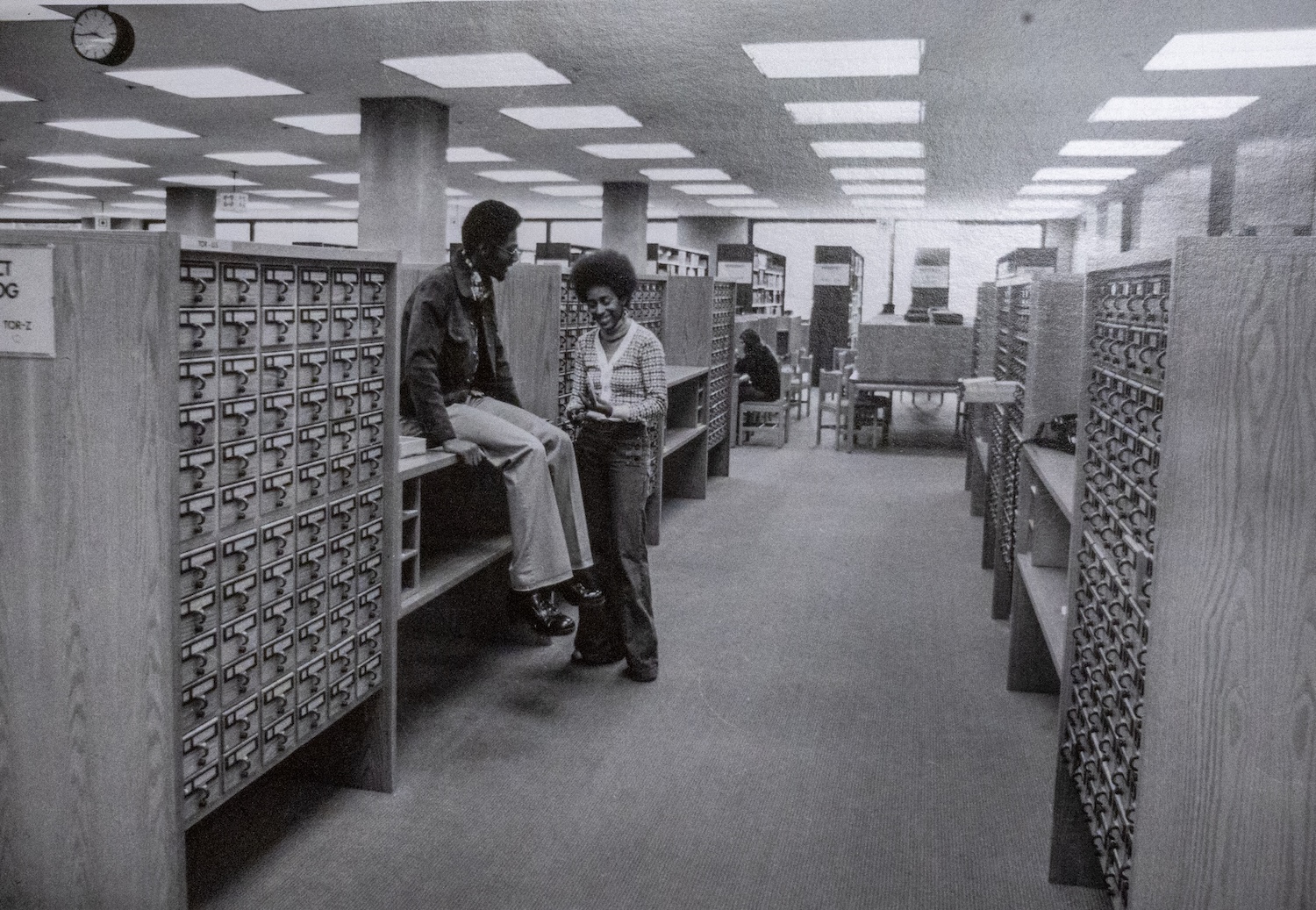
Nola Sheffer Letter
